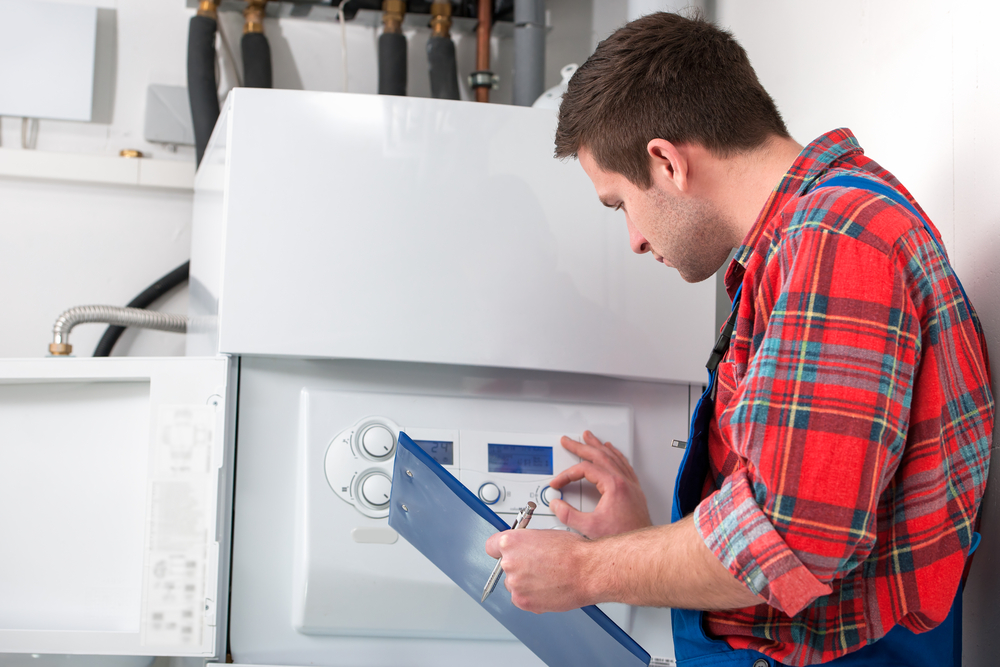It’s understandable that you want to protect your heat pump at all costs. A home just isn’t a home when you can’t keep your thermostat at a comfortable place! You’re more likely to experience issues with your heat pump if you:
- Live in an area with an extreme climate.
- Tend to set your thermostat extremely high or low.
- Run your unit throughout the year.
- Have pets.
- Live in an area with higher air pollution.
- Don’t have your unit serviced seasonally.
Most issues with your heat pump come down to just a handful of causes. Knowing the common reasons why heat pumps stop working can help you to diagnose the issue faster to restore comfort and predictability to your home! Unmasking the problem is also the first step to getting it fixed! Take a look at common heat pump problems with some pointers on how to avoid them!
Common Problem #1: Your Heat Pump Isn’t Activating
Have a heat pump that won’t turn on? The cause can usually be narrowed down to just a few places. Here’s a look at how to troubleshoot the issue:
- Step #1: Look at your thermostat. How does the display look? You should be seeing an indicator that your pump is set to “cool” with the ability to see both your current temperature and set temperature. A system error on the screen of your smart thermostat could tell you all you need to know.
- Step #2: Check the power source. It’s possible that your circuit breaker was tripped by your unit demanding too much power. Circle back to your home’s electrical panel to confirm that the breaker to the pump is on. Get help from a pro if this is a repeat problem.
- Step #3: Check your heat pump starter capacitor. This one requires your ear! Take a second to listen for any sounds coming from your heat pump. Clicking noises can be signs that your capacitor has hit a snag. If the capacitor is lagging, it may be time to bring in a tech for a replacement.
- Step #4: Check your reverse valve. While it may seem self-explanatory, a reverse valve that isn’t reversing is broken. This valve is responsible for allowing your pump to work for both heating and cooling. The telltale sign is a valve that only turns on for cooling.
Checking these four points should help you at least narrow down the area of your pump that’s malfunctioning. While these problems can be easy to detect, they don’t necessarily come with quick fixes. Fixing these four common causes for broken heat pumps usually requires installing a replacement part.
Common Problem #2: There’s No Heat Coming From Your Heat Pump
Are you noticing that your heat pump doesn’t appear to be blowing any hot air? The most common reason for this is a blocked unit. Has it been snowy or icy in your area lately? Both snow and ice can cause airflow blockages for your unit. In addition, things like leaves and general debris can cause blocks. This is something you see a lot after storms have blown objects around in the yard. The good news for you is that fixing a blockage is very simple. You can usually get things rolling along again by simply cleaning off the heat pump.
It’s also possible that debris is clogging your air filter. Excess dirt, dust, and debris will prevent air from flowing through your filter. This is actually very preventable if you remember to change your air filters regularly.
If both your unit and filter look clear, it’s time to check up on your refrigerant levels. You may not be getting any air flowing through if refrigerant levels are too low. However, simply replenishing refrigerants isn’t enough. It’s possible that something like a leak that is caused by a damaged or compromised part is to blame. Homeowners are required to defer refrigerant refills to EPA-certified HVAC professionals!
Common Problem #3: Your Heat Pump Won’t Stop Running
A heat pump that won’t stop can absolutely crush your energy bill! It also drains money by shortening the life of your unit. You can usually get ahead of a running heat pump by knowing how to check up on your unit for some telltale signs that something is wrong. Here’s the checklist of how to avoid this problem.
Set the thermostat to reasonable temperatures. While it may be tempting to crank your settings to the extreme to try to get your home comfortable quickly, you’re actually sabotaging your unit when you do this. First, cranking up your heat or air conditioning doesn’t actually change the temperature in your home any faster. It only causes your unit to work harder to try to reach the extreme temperature you’ve selected. You’re also likely to waste energy because you’ll forget that you’ve tampered with your thermostat until your home becomes uncomfortable.
A continuously running heat pump can also be caused by a dirty air filter. The importance of keeping your air filter clean cannot be overstated. When clogs block your filter, your heat pump doesn’t have a flow of continuous fresh air to work with. This throws your unit into a pattern of continuously cycling through to try to maintain your desired temperature. How often should you be replacing your air filter? Most filters need to be changed every 30 to 60 days. Filter changes should fall on the frequent side in homes with pets.
The last thing to check when your pump won’t stop running is your compressor contractor. This part controls the amount of power directed to your heat pump. While this isn’t the most common cause of a running pump, it’s definitely possible that a broken compressor contractor could be causing the activity.
Common Problem #4: Your Heat Pump Won’t Cool
Is the air in your home stifling? This may be a case of having a heat pump that’s not cooling. Generally, the same problems that prevent your heat pump from heating can also stop it from cooling. Start your troubleshooting protocol by checking that your thermostat is set to “cool” with a reasonable temperature displayed on the dial. Any errors here could be caused by anything from incorrect temperature readings to electrical issues.
Your reverse valve that’s responsible for reversing your refrigerant could also be at fault here. Make sure to bring in a qualified tech to handle a replacement for this component if you suspect that this is the issue. The same goes if you suspect that low refrigerant levels could be causing the lag in cool air.
A heat pump that’s not cooling sometimes just comes down to having a dirty unit. Ideally, you’re already having your entire HVAC unit professionally inspected and cleaned once a year. If you’ve let this slide, it’s time to do a check for dirt, debris, and dust that could be clogging your unit. You’ll also want to verify that your filters have been changed within the past 30 to 60 days.
How Do I Get My Heat Pump Working Again?
It’s possible that your broken heat pump may only require a simple fix. However, even a simple fix can turn complicated if you attempt to tackle a malfunctioning heat pump on your own without getting a proper diagnosis from an HVAC pro! At Delaware Heating and Air, we like to remind our clients that routine HVAC maintenance is the key to avoiding surprises that always seem to hit on the hottest or coldest days! Something as basic as an annual inspection can help your unit to keep running season after season without any worries. Our team is also here to help you get your HVAC system running again if you’re experiencing one of the four common heat pump problems. Contact Delaware Heating and Air for help today!


Recent Comments